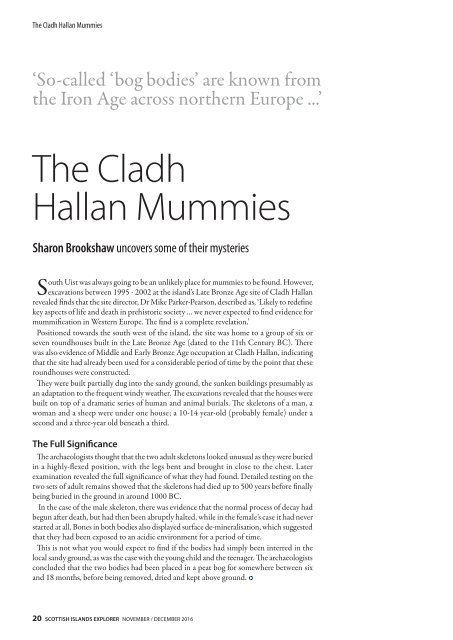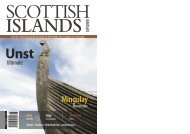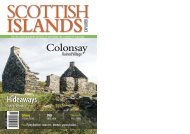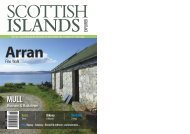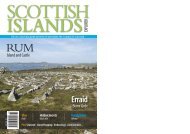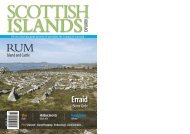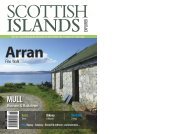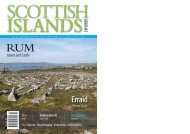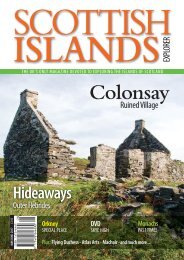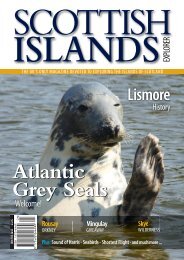You also want an ePaper? Increase the reach of your titles
YUMPU automatically turns print PDFs into web optimized ePapers that Google loves.
The Cladh Hallan Mummies<br />
‘So-called ‘bog bodies’ are known from<br />
the Iron Age across northern Europe ...’<br />
The Cladh<br />
Hallan Mummies<br />
Sharon Brookshaw uncovers some of their mysteries<br />
South Uist was always going to be an unlikely place for mummies to be found. However,<br />
excavations between 1995 - 2002 at the island’s Late Bronze Age site of Cladh Hallan<br />
revealed finds that the site director, Dr Mike Parker-Pearson, described as, ‘Likely to redefine<br />
key aspects of life and death in prehistoric society … we never expected to find evidence for<br />
mummification in Western Europe. e find is a complete revelation.’<br />
Positioned towards the south west of the island, the site was home to a group of six or<br />
seven roundhouses built in the Late Bronze Age (dated to the 11th Century BC). ere<br />
was also evidence of Middle and Early Bronze Age occupation at Cladh Hallan, indicating<br />
that the site had already been used for a considerable period of time by the point that these<br />
roundhouses were constructed.<br />
ey were built partially dug into the sandy ground, the sunken buildings presumably as<br />
an adaptation to the frequent windy weather. e excavations revealed that the houses were<br />
built on top of a dramatic series of human and animal burials. e skeletons of a man, a<br />
woman and a sheep were under one house; a 10-14 year-old (probably female) under a<br />
second and a three-year old beneath a third.<br />
The Full Significance<br />
e archaeologists thought that the two adult skeletons looked unusual as they were buried<br />
in a highly-flexed position, with the legs bent and brought in close to the chest. Later<br />
examination revealed the full significance of what they had found. Detailed testing on the<br />
two sets of adult remains showed that the skeletons had died up to 500 years before finally<br />
being buried in the ground in around 1000 BC.<br />
In the case of the male skeleton, there was evidence that the normal process of decay had<br />
begun aer death, but had then been abruptly halted, while in the female’s case it had never<br />
started at all. Bones in both bodies also displayed surface de-mineralisation, which suggested<br />
that they had been exposed to an acidic environment for a period of time.<br />
is is not what you would expect to find if the bodies had simply been interred in the<br />
local sandy ground, as was the case with the young child and the teenager. e archaeologists<br />
concluded that the two bodies had been placed in a peat bog for somewhere between six<br />
and 18 months, before being removed, dried and kept above ground.<br />
20 SCOTTISH ISLANDS EXPLORER NOVEMBER / DECEMBER <strong>2016</strong>


